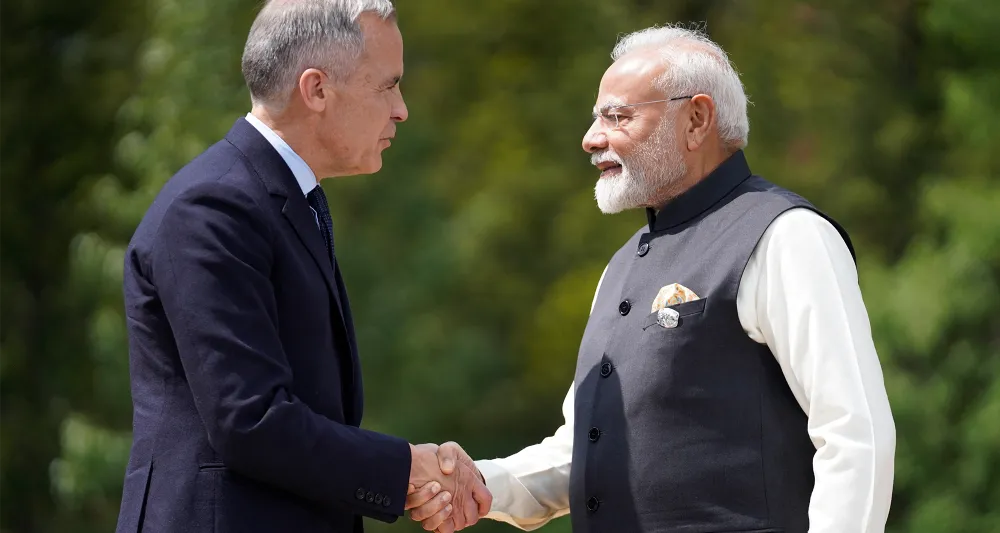Canadian Prime Minister Mark Carney’s decision to invite Indian Prime Minister Narendra Modi to the 2025 G7 Summit in Kananaskis, Alberta, marked a turning point in the strained ties between Ottawa and New Delhi. The visit — Modi’s first to Canada in a decade — carried both symbolism and substance, signalling cautious optimism for a long-awaited diplomatic reset after years of tension.
Relations between the two countries had been frozen since 2023, when Canada accused India of involvement in the killing of Sikh activist Hardeep Singh Nijjar. Now, with Carney leading the G7, the summit became an ideal platform to re-engage one of the world’s most important emerging powers. Carney emphasized India’s growing global influence, its democratic credentials, and its central role in supply-chain security — all key reasons for extending the invitation.
Despite the warm handshake and smiles at Kananaskis, the road ahead remains steep. Canada still harbours deep concerns over foreign interference and transnational repression linked to Indian agents, while India remains alarmed by the continued presence of Khalistani separatist elements in Canada. These unresolved security and political disputes hover over the renewed dialogue like an unspoken tension.
During the summit, India joined other “outreach partner” nations such as Brazil, South Africa, and South Korea in endorsing two Canadian-led initiatives: the Critical Minerals Action Plan, aimed at strengthening global supply chains, and the Kananaskis Wildfire Charter, promoting international cooperation on climate resilience. These steps showcased common ground in areas such as clean energy, responsible AI, and sustainable development — themes that resonated strongly with both leaders.
On the sidelines, Carney and Modi held a bilateral meeting described by both as “positive” and “constructive.” The two countries agreed to reinstate high commissioners and restore full diplomatic services, a gesture that formally ends months of diplomatic freeze. They also pledged to explore cooperation in energy, digital infrastructure, artificial intelligence, and food security. Talks are expected to resume soon on a free-trade agreement that could add up to C$8 billion to bilateral trade over the next decade.
However, Carney’s outreach was not without controversy. Sikh activist groups in Canada criticized the invitation, calling it a betrayal of Canadian values, and protests were held in Calgary during Modi’s visit. Still, the Carney government appears determined to prioritize economic and strategic cooperation, positioning Canada to diversify trade relationships amid global uncertainty and rising U.S. tariffs.
For India, the summit offered a chance to strengthen its standing as a voice of the Global South and highlight the need for global action against terrorism — a recurring theme in Modi’s address. His remarks were made in the backdrop of renewed violence in Kashmir and India’s calls for international unity against extremist threats.
Whether this handshake in the Rockies truly ushers in a new era or simply pauses old disputes will depend on what happens next. If both sides can find a balance between justice and diplomacy, commerce and security, the Carney–Modi dialogue may yet turn a cautious reset into a lasting partnership.


